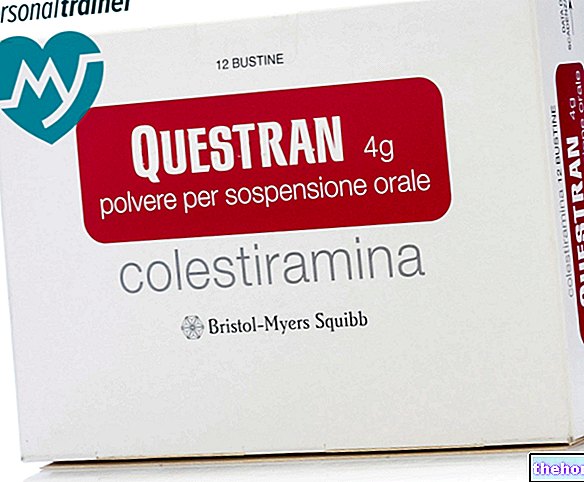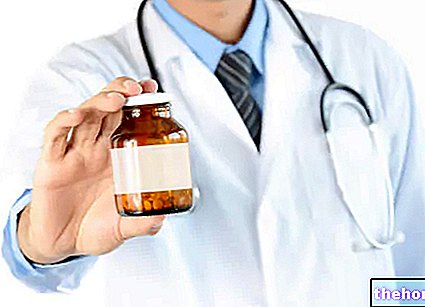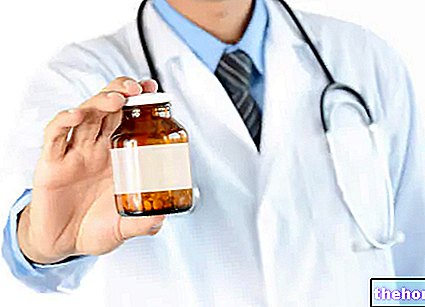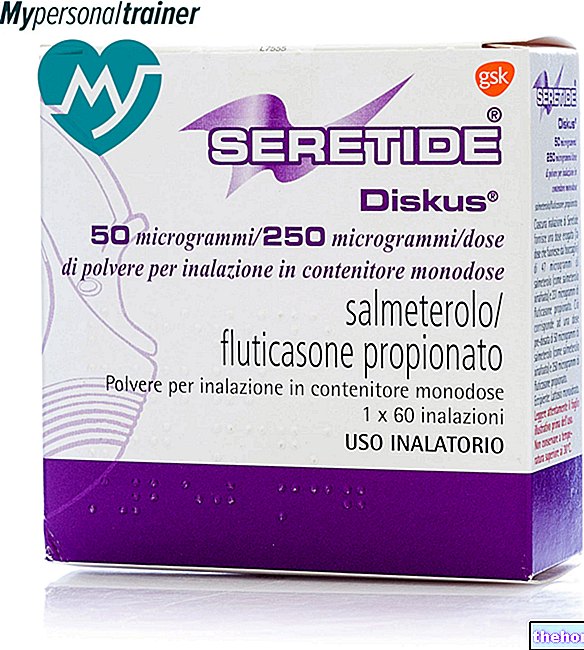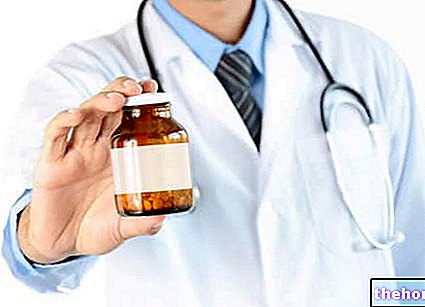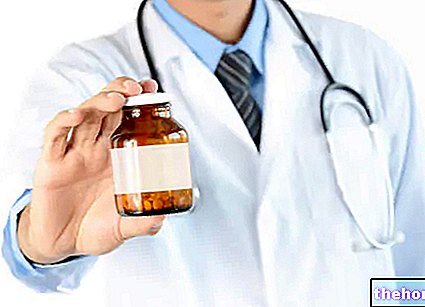Active ingredients: Amisulpride
SULAMID 50 mg tablets
Why is Sulamid used? What is it for?
Pharmacotherapeutic group
Psycholeptic, benzamides.
Therapeutic indications
Treatment (short - medium term) of dysthymia.
Contraindications When Sulamid should not be used
Hypersensitivity to the active substance or to any of the excipients.
Pheochromocytoma.
Concomitance of prolactin-dependent tumors such as pituitary prolactinomas and mammary tumors.
Not to be used in case of confirmed or presumed pregnancy and during lactation. In women of childbearing age who do not use adequate contraceptive means.
Not to be used in children and, in any case, to be used only at the end of puberty.
Combination with the following medications, due to the possible occurrence of torsades de pointes:
- class Ia antiarrhythmics such as quinidine, disopyramide;
- class III antiarrhythmics such as amiodarone, sotalol; - other medicines such as bepridil, cisapride, sultopride, thioridazine, methadone, i.v. erythromycin, i.v vincamine, halofantrine, pentamidine, sparfloxacin (see "Interactions").
Combination with levodopa (see section "Interactions").
Pregnancy (see "Fertility, pregnancy and breastfeeding").
Precautions for use What you need to know before taking Sulamid
In elderly patients amisulpride, like other neuroleptic drugs, should be used with particular caution due to the possible risk of hypotension and sedation. Dosage reduction may also be required in case of renal insufficiency.
Since the drug is eliminated by the kidney, in case of renal insufficiency the dose must be reduced or intermittent treatment can be prescribed (see "Dose, method and time of administration"). Amisulpride can lower the seizure threshold. Therefore, patients with a history of epileptic episodes should be closely followed during treatment. As with other antidopaminergics, particular caution is required when prescribing amisulpride to parkinsonian patients, as the disease may worsen.
Amisulpride should only be used when neuroleptic treatment cannot be avoided.
Hyperglycaemia has been observed in patients treated with some atypical antipsychotics, including amisulpride. Therefore, patients with a certain diagnosis of diabetes mellitus or with risk factors for diabetes should undergo appropriate glycemic monitoring when on amisulpride therapy.
Leukopenia, neutropenia and agranulocytosis have been reported with antipsychotics, including Sulamid. Unexplained infections or fever may indicate blood dyscrasia (see "Side Effects"), requiring "immediate haematological investigation.
Interactions Which drugs or foods can modify the effect of Sulamid
Tell your doctor or pharmacist if you have recently taken any other medicines, even those without a prescription.
The association with other psychotropic drugs requires particular caution and vigilance on the part of the physician in order to avoid unexpected undesirable effects of interaction. When neuroleptics are administered concomitantly with drugs that prolong the QT the risk of onset of cardiac arrhythmias increases.
Contraindicated associations
Drugs capable of causing torsades de pointes:
- class Ia antiarrhythmics, such as quinidine, disopyramide;
- class III antiarrhythmics, such as amiodarone, sotalol; other drugs such as bepridil, cisapride, sultopride, thioridazine, methadone, i.v. erythromycin, i.v vincamine, halofantrine, pentamidine, sparfloxacin.
Levodopa: Mutual antagonism of the effects between levodopa and neuroleptics. Amisulpride can counteract the effect of dopamine agonists such as bromocriptine and ropinirole.
Do not administer concomitantly with drugs that cause alterations in electrolytes, such as drugs that cause hypokalaemia such as hypokalemic diuretics, stimulating laxatives, amphotericin B i.v., glucocorticoids, tetracosactides.
Hypokalemia must be corrected.
Associations not recommended
Amisulpride may increase the core effects of alcohol.
Drugs that increase the risk of Torsades de Pointes or can prolong QT:
- drugs that induce bradycardia: beta-blockers, calcium channel blockers such as diltiazem and verapamil, clonidine, guanfacine, digitalis.
- neuroleptics such as pimozide, haloperidol, imipramine antidepressants, lithium
- some antihistamines
- some antimalarials (for example mefloquine)
Associations to consider carefully
- CNS depressants: hypnotics, tranquilizers, anesthetics, analgesics, sedating H1 antihistamines, barbiturates, benzodiazepines and other anxiolytics, clonidine and derivatives.
- antihypertensive drugs and other hypotensive drugs.
Warnings It is important to know that:
A potentially fatal symptom complex called Neuroleptic Malignant Syndrome has been reported during treatment with neuroleptic drugs. This syndrome is characterized by: hyperpyrexia, muscle rigidity, akinesia, vegetative disorders (irregularities in the pulse and blood pressure, sweating, tachycardia, arrhythmia), elevated creatine phosphokinase values, changes in consciousness that can progress to stupor and coma . In case of hyperthermia, particularly at high doses, treatment with all antipsychotic drugs, including amisulpride, should be discontinued.
Prolongation of the QT interval
Use with caution in patients with cardiovascular disease or a family history of QT prolongation.
Avoid concomitant therapy with other neuroleptics.
"Side effects"). This effect is known to increase the risk of severe ventricular arrhythmias, such as torsades de pointes. Before administration and, if possible, depending on the clinical status of the patient, it is recommended to monitor the factors that could favor the onset of this rhythm disturbance, such as:
- bradycardia less than 55 beats per minute;
- electrolyte imbalance, especially hypokalemia;
- congenital or acquired prolonged QT interval;
- ongoing treatment with drugs capable of inducing marked bradycardia (
Cerebrovascular events
An approximately three-fold increase in the risk of cerebrovascular events was observed in randomized clinical trials versus placebo in a population of elderly patients with dementia treated with some atypical antipsychotics. The mechanism of this increased risk is unknown. An increased risk for other antipsychotics or other patient populations cannot be excluded. Sulamid should be used with caution in patients with stroke risk factors.
Elderly patients with dementia
Elderly patients with dementia-related psychosis treated with antipsychotic drugs have an increased risk of death. Analyzes of seventeen placebo-controlled clinical trials (10-week modal duration) in patients who were largely taking atypical antipsychotic drugs revealed a 1.6 to 1 risk of death in patients treated with the drug. 7 times that found in placebo-treated patients. In a 10-week controlled study, the death rate in patients treated with the drug was approximately 4.5%, compared with 2.6% in the placebo group. Although the causes of death during clinical trials with atypical antipsychotics were varied, most appeared to be either cardiovascular (e.g. heart failure, sudden death) or infectious (e.g. pneumonia) in nature. Observational studies suggest that, as with atypical antipsychotic drugs, treatment with conventional antipsychotic drugs may also increase mortality. The extent to which the finding of increased mortality in observational studies can be attributed to antipsychotic drugs rather than to some specific patient characteristics is unclear.
Venous thromboembolism
Cases of venous thromboembolism (VTE) have been reported with antipsychotic drugs. Since patients treated with antipsychotics often present with acquired risk factors for VTE, all possible risk factors for VTE must be identified before and during treatment with Sulamid and preventive measures taken.
Withdrawal symptoms, including nausea, vomiting and insomnia, have been described following abrupt discontinuation of high therapeutic doses of antipsychotic drugs. Psychotic symptoms may also recur and development of involuntary movement disorders (such as akathisia, dystonia and dyskinesia) has been reported with amisulpride. Therefore, gradual discontinuation of amisulpride is recommended.
Feeding time
The use of Sulamid during lactation is not recommended (see "Fertility, pregnancy and lactation").
Fertility, pregnancy, breastfeeding
Ask your doctor or pharmacist for advice before taking any medicine.
Pregnancy
It is contraindicated in case of confirmed or presumed pregnancy. The following symptoms have been observed in newborn babies of mothers who have taken conventional or atypical antipsychotics, including Sulamid, during the last trimester (last three months of pregnancy): shaking, muscle stiffness and / or weakness, sleepiness, agitation, breathing problems and difficulty in food intake (see "Side Effects"). If your child shows any of these symptoms, contact your doctor. No teratogenic effects were observed.
Feeding time
It is not known whether amisulpride is excreted in human milk; therefore breastfeeding is not recommended (see "Special warnings").
Fertility
In the animal, amisulpride did not show direct toxicity on reproductive function. A decrease in fertility related to the pharmacological effects of the drug (mediated effect of prolactin) was observed.
Effects on ability to drive and use machines:
Even when used as recommended, amisulpride may cause drowsiness and therefore the ability to drive or use machines may be impaired (see "Undesirable effects").
Important information about some of the ingredients:
SULAMID contains lactose. If you have been told by your doctor that you have an intolerance to some sugars, contact your doctor before taking this medicinal product.
Dosage and method of use How to use Sulamid: Dosage
One tablet a day or second medical opinion.
Elderly patients: The safety of amisulpride has been evaluated in a limited number of elderly patients. Amisulpride should be used with particular care due to the possible risk of hypotension or sedation. The posology must be carefully established by the Doctor who will have to evaluate a possible reduction in the dosage indicated above. Dosage reduction may also be required in case of renal insufficiency.
Children: The efficacy and safety of amisulpride from puberty to the age of 18 years have not been established. Therefore, the use of amisulpride from puberty to the age of 18 is not recommended. Amisulpride is contraindicated in children up to puberty as its safety has not yet been established (see "Contraindications").
Renal insufficiency: amisulpride is eliminated by the kidney. In case of renal insufficiency, the dose should be reduced by half in patients with creatinine clearance between 30 and 60 ml / min and to one third in patients with clearance between 10 and 30 ml / min.
As no data are available in patients with severe renal insufficiency (creatinine clearance <10 ml / min) extreme caution is recommended in these patients (see "Precautions for use").
Hepatic insufficiency: amisulpride is poorly metabolised, therefore no dose reduction is necessary.
Overdose What to do if you have taken too much Sulamid
Experience with amisulpride in overdose is limited. An enhancement of the drug's known pharmacological effects has been reported. These include somnolence, sedation, hypotension, extrapyramidal symptoms and coma. Cases with fatal outcome have been reported mainly in combination with other agents. Psychotropic In case of acute overdose, the possibility of taking multiple drugs should be considered.
Since amisulpride is poorly dialysed, hemodialysis is not useful for eliminating the drug. There is no specific antidote. Appropriate therapeutic measures and close monitoring of vital functions must therefore be instituted: continuous cardiac monitoring (risk of QT interval prolongation) until the patient has not stabilized If severe extrapyramidal symptoms appear, anticholinergic drugs should be given.
In case of accidental ingestion / intake of an excessive dose of SULAMID, notify your doctor immediately or go to the nearest hospital.
If you have any further questions on the use of SULAMID, ask your doctor or pharmacist.
Side Effects What are the side effects of Sulamid
Like all medicines, SULAMID can cause side effects, although not everybody gets them. Side effects were sorted into frequency classes, using the following convention: very common (> 1/10); common (> 1/100; 1/1000; 1 / 10,000;
Data from Clinical Studies
The following side effects have been observed in controlled clinical trials. It should be noted that in some cases it can be difficult to distinguish adverse events from symptoms of the underlying disease.
- Pathologies of the Nervous System
Very common: Extrapyramidal symptoms may appear such as: tremor, rigidity, hypokinesia, hypersalivation, akathisia, dyskinesia. These symptoms are generally mild at optimal dosages and partially reversible with the administration of antiparkinsonian drugs, even without discontinuation of amisulpride. The dose-related incidence of extrapyramidal symptoms remains extremely low at doses between 50 and 300 mg / day.
Common: Acute dystonia (spasmodic torticollis, oculogyric crisis, trismus) may occur, which is reversible with the administration of an antiparkinsonian drug, even without discontinuing amisulpride therapy. Drowsiness.
Uncommon: Tardive dyskinesia characterized by rhythmic involuntary movements predominantly involving the tongue and / or face has been reported, generally as with all neuroleptics after long-term treatment. Treatment with antiparkinsonian drugs is ineffective or may induce aggravation of symptoms. Convulsions.
- Psychiatric Disorders
Common: Insomnia, anxiety, agitation, psychomotor excitability, orgasm abnormalities.
Frequency not known: Confusion.
- Gastrointestinal Disorders
Common: constipation, nausea, vomiting, dry mouth.
- Endocrine pathologies
Common: Amisulpride causes a reversible increase in plasma prolactin levels after drug discontinuation. This increase may be associated with the onset of galactorrhea, amenorrhea, dysmenorrhea, gynaecomastia, breast pain and erectile dysfunction.
- Metabolism and nutrition disorders
Uncommon: Hyperglycaemia (see "Precautions for use").
Frequency not known: Hypertriglyceridaemia and hypercholesterolemia.
- Cardiovascular Pathologies
Common: hypotension.
Uncommon: bradycardia.
- Diagnostic tests
Common: weight gain.
Uncommon: elevated liver enzymes especially transaminases.
- Immune System Disorders
Uncommon: Allergic reactions. Were also observed: tendency to chills of low intensity, dyspnoea of low intensity, muscle aches.
Post-marketing data
The following adverse reactions were reported as spontaneous reports only:
- Disorders of the blood and lymphatic system
Frequency not known: leukopenia, neutropenia and agranulocytosis (see "Precautions for use").
- Pathologies of the Nervous System
Frequency not known: Neuroleptic Malignant Syndrome, which is a life-threatening complication (see "Special Warnings").
- Cardiac pathologies
Frequency not known: QT prolongation, ventricular arrhythmias such as torsades de pointes, ventricular tachycardia, which can lead to ventricular fibrillation or cardiac arrest, sudden death (see "Special warnings").
- Vascular pathologies
Frequency not known: Venous thromboembolism, including pulmonary embolism, sometimes fatal, and deep vein thrombosis (see "Special Warnings").
- Skin and subcutaneous tissue disorders:
Frequency not known: angioedema, urticaria.
- Pregnancy, puerperium and perinatal conditions
Frequency not known: Neonatal withdrawal syndrome, extrapyramidal symptoms (see "Fertility, pregnancy and lactation")
Reporting of side effects
Compliance with the instructions contained in the package leaflet reduces the risk of undesirable effects. If you get any side effects, talk to your doctor or pharmacist. This includes any possible side effects not listed in this leaflet. Undesirable effects can also be reported directly via the national reporting system at “www.agenziafarmaco.gov.it/it/responsabili.” By reporting side effects you can help provide more information on the safety of this medicine.
Expiry and Retention
Expiry: see the expiry date printed on the package.
The expiry date refers to the product in intact packaging, correctly stored.
Warning: do not use the medicine after the expiry date shown on the package.
Medicines should not be disposed of via wastewater or household waste.
Ask your pharmacist how to throw away medicines you no longer use. This will help protect the environment.
Keep this medicine out of the reach and sight of children.
Composition and pharmaceutical form
Composition
Each tablet contains:
Active ingredient: amisulpride 50 mg
Excipients: sodium carboxymethyl starch (type A), lactose monohydrate, microcrystalline cellulose, hypromellose, magnesium stearate.
Pharmaceutical form and content
12 tablets for oral use.
Source Package Leaflet: AIFA (Italian Medicines Agency). Content published in January 2016. The information present may not be up-to-date.
To have access to the most up-to-date version, it is advisable to access the AIFA (Italian Medicines Agency) website. Disclaimer and useful information.
01.0 NAME OF THE MEDICINAL PRODUCT
SULAMID 50 MG TABLETS
02.0 QUALITATIVE AND QUANTITATIVE COMPOSITION
Each tablet contains:
Active principle: amisulpride 50 mg
Excipients: Lactose monohydrate 34.8 mg
For the full list of excipients, see section 6.1
03.0 PHARMACEUTICAL FORM
Tablets.
04.0 CLINICAL INFORMATION
04.1 Therapeutic indications
Treatment (short to medium term) of dysthymia.
04.2 Posology and method of administration
One tablet a day or second medical opinion.
Elderly patients: amisulpride should be used with particular care due to the possible risk of hypotension or sedation. The posology must be carefully established by the Doctor who will have to evaluate a possible reduction in the dosage indicated above.
Children: The efficacy and safety of amisulpride from puberty to the age of 18 have not been established. Therefore, the use of amisulpride from puberty to the age of 18 is not recommended. Amisulpride is contraindicated in children up to puberty (see section 4.3).
Kidney failure: amisulpride is eliminated by the kidney. In case of renal insufficiency, the dose should be reduced by half in patients with creatinine clearance between 30 and 60 ml / min and to one third in patients with clearance between 10 and 30 ml / min. No data are available in patients with severe renal insufficiency (creatinine clearance
Hepatic insufficiency: amisulpride is poorly metabolised, therefore no dose reduction is required.
04.3 Contraindications
Hypersensitivity to the active substance or to any of the excipients.
Pheochromocytoma.
Concomitance of prolactin-dependent tumors such as pituitary prolactinomas and mammary tumors.
Not to be used in case of confirmed or presumed pregnancy and during lactation. In women of childbearing age who do not use adequate contraceptive means.
Not to be used in children and, in any case, to be used only at the end of puberty.
Association with the following drugs, for the possible onset of torsades de pointes:
• class Ia antiarrhythmics such as quinidine, disopyramide;
• class III antiarrhythmics such as amiodarone, sotalol;
• other drugs such as bepridil, cisapride, sultopride, thioridazine, methadone, i.v. erythromycin, i.v vincamine, halofantrine, pentamidine, sparfloxacin (see section 4.5).
Combination with levodopa (see section 4.5).
04.4 Special warnings and appropriate precautions for use
• A potentially fatal symptom complex called Neuroleptic Malignant Syndrome has been reported during treatment with neuroleptic drugs. This syndrome is characterized by: hyperpyrexia, muscle rigidity, akinesia, vegetative disorders (irregularities in the pulse and blood pressure, sweating, tachycardia, arrhythmia), elevated creatine phosphokinase values, changes in consciousness that can progress to stupor and coma . In case of hyperthermia, particularly at high doses, treatment with all antipsychotic drugs, including amisulpride, should be discontinued.
• As with other antidopaminergics, particular caution is required when prescribing amisulpride to parkinsonian patients, as the disease may get worse. Amisulpride should only be used when neuroleptic treatment cannot be avoided.
• Prolongation of the QT interval
Use with caution in patients with cardiovascular disease or a family history of QT prolongation.
Avoid concomitant therapy with other neuroleptics.
Amisulpride causes dose-dependent prolongation of the QT interval (see section 4.8). This effect is known to increase the risk of serious ventricular arrhythmias such as torsades de pointes.
Before administration and, if possible, depending on the clinical status of the patient, it is recommended to monitor the factors that could favor the onset of this rhythm disturbance, such as:
• bradycardia less than 55 beats per minute;
• electrolyte imbalance, especially hypokalaemia;
• congenital or acquired prolonged QT interval;
• ongoing treatment with drugs capable of inducing marked bradycardia (
• Cerebrovascular events
In randomized clinical trials versus An approximately three-fold increase in the risk of cerebrovascular events was observed in a population of elderly patients with dementia treated with some atypical antipsychotics. The mechanism of this increased risk is unknown. An increased risk for other antipsychotics or other patient populations cannot be excluded. Sulamid should be used with caution in patients with stroke risk factors.
• Elderly patients with dementia
Elderly patients with dementia-related psychosis treated with antipsychotic drugs have an increased risk of death.
Analyzes of seventeen placebo-controlled clinical trials (10-week modal duration) in patients who were largely taking atypical antipsychotic drugs revealed a 1.6 to 1 risk of death in patients treated with the drug. 7 times that found in placebo-treated patients. In a 10-week controlled study, the death rate in patients treated with the drug was approximately 4.5%, compared with 2.6% in the placebo group.
Although the causes of death during clinical trials with atypical antipsychotics were varied, most appeared to be either cardiovascular (e.g. heart failure, sudden death) or infectious (e.g. pneumonia) in nature.
Observational studies suggest that, as with atypical antipsychotic drugs, treatment with conventional antipsychotic drugs may also increase mortality.
The extent to which the finding of increased mortality in observational studies can be attributed to antipsychotic drugs rather than to some specific patient characteristics is unclear.
• Venous thromboembolism
Cases of venous thromboembolism (VTE) have been reported with antipsychotic drugs.
Since patients treated with antipsychotics often present with acquired risk factors for VTE, all possible risk factors for VTE must be identified before and during treatment with Sulamid and preventive measures taken.
• Hyperglycaemia has been observed in patients treated with some atypical antipsychotics, including amisulpride. Therefore, patients with a certain diagnosis of diabetes mellitus or with risk factors for diabetes should undergo appropriate glycemic monitoring when on amisulpride therapy.
• Amisulpride can lower the seizure threshold. Therefore, patients with a history of epileptic episodes should be closely followed during treatment.
• Since the drug is eliminated by the kidney, in case of renal insufficiency the dose must be reduced or intermittent treatment can be prescribed (see section 4.2).
• In elderly patients amisulpride, like other neuroleptic drugs, should be used with particular caution due to the possible risk of hypotension and sedation.
• Withdrawal symptoms have been described after abrupt discontinuation of high therapeutic doses of antipsychotic drugs. The development of involuntary movement disorders (such as akathisia, dystonia and dyskinesia) has been reported with amisulpride. Gradual discontinuation of amisulpride is therefore recommended.
Important information about some of the ingredients
SULAMID contains lactose, therefore patients with rare hereditary problems of galactose intolerance, the Lapp lactase deficiency, glucose-galactose malabsorption should not take this medicine.
04.5 Interactions with other medicinal products and other forms of interaction
The association with other psychotropic drugs requires particular caution and vigilance on the part of the physician in order to avoid unexpected undesirable effects from interaction.
When neuroleptics are administered concomitantly with QT prolonging drugs, the risk of developing cardiac arrhythmias increases.
Contraindicated associations
Drugs capable of causing torsades de pointes:
- class Ia antiarrhythmics, such as quinidine, disopyramide;
- class III antiarrhythmics, such as amiodarone, sotalol;
- other drugs such as bepridil, cisapride, sultopride, thioridazine, methadone, i.v. erythromycin, i.v vincamine, halofantrine, pentamidine, sparfloxacin.
Levodopa: Mutual antagonism of the effects between levodopa and neuroleptics.
Do not administer concomitantly with drugs that cause alterations in electrolytes, such as drugs that cause hypokalaemia such as hypokalemic diuretics, stimulating laxatives, amphotericin B i.v., glucocorticoids, tetracosactides.
Hypokalemia must be corrected.
Associations not recommended
Amisulpride may increase the core effects of alcohol.
Drugs that increase the risk of torsades de pointes or can prolong QT:
- drugs that induce bradycardia: beta-blockers, calcium channel blockers such as diltiazem and verapamil, clonidine, guanfacine; digitalis.
- neuroleptics such as pimozide, haloperidol, imipraminic antidepressants, lithium.
Associations to consider carefully
- CNS depressants: hypnotics, tranquilizers, anesthetics, analgesics, sedating H1 antihistamines, barbiturates, benzodiazepines and other anxiolytics, clonidine and derivatives.
- antihypertensive drugs and other hypotensive drugs.
04.6 Pregnancy and lactation
Pregnancy
It is contraindicated in case of confirmed or presumed pregnancy.
Infants exposed to conventional or atypical antipsychotics, including Sulamid, during the third trimester of pregnancy are at risk for side effects including extrapyramidal or withdrawal symptoms which may vary in severity and duration after birth. There have been reports of agitation, hypertonia, hypotonia, tremor, somnolence, respiratory distress, food intake disturbances. Infants should therefore be closely monitored.
In the animal amisulpride did not show direct toxicity on reproductive function. A decrease in fertility related to the pharmacological effects of the drug (effect mediated by prolactin) was observed. No teratogenic effects were observed.
Feeding time
It is not known whether amisulpride is excreted in human milk; therefore use during breastfeeding is contraindicated.
04.7 Effects on ability to drive and use machines
Even when used as recommended, amisulpride may cause drowsiness and therefore the ability to drive or use machines may be impaired (see section 4.8).
04.8 Undesirable effects
Side effects were sorted into frequency classes, using the following convention:
very common (≥ 1/10); common (≥ 1/100;
Data from Clinical Studies
The following side effects have been observed in controlled clinical trials. It should be noted that in some cases it can be difficult to distinguish adverse events from symptoms of the underlying disease.
• Nervous System Pathologies
Very common: extrapyramidal symptoms may appear such as: tremor, rigidity, hypokinesis, hypersalivation, akathisia, dyskinesia. These symptoms are generally mild at optimal dosages and partially reversible with the administration of antiparkinsonian drugs, even without discontinuation of amisulpride. The dose-related incidence of extrapyramidal symptoms remains extremely low at doses between 50 and 300 mg / day.
Common: Acute dystonia (spasmodic torticollis, oculogyric crisis, trismus) may occur, which is reversible with the administration of an antiparkinsonian drug, even without discontinuing amisulpride therapy.
Drowsiness.
Uncommon: Tardive dyskinesia characterized by rhythmic involuntary movements predominantly involving the tongue and / or face has been reported, generally as with all neuroleptics after long-term treatment. Treatment with antiparkinsonian drugs is ineffective or may induce aggravation of symptoms.
Convulsions.
• Psychiatric Disorders
Common: insomnia, anxiety, agitation, psychomotor excitability, orgasm abnormalities.
• Gastrointestinal disorders
Common: constipation, nausea, vomiting, dry mouth.
• Endocrine Diseases
Common: Amisulpride causes a reversible increase in plasma prolactin levels after drug discontinuation. This increase may be associated with the onset of galactorrhea, amenorrhea, dysmenorrhea, gynaecomastia, breast pain and erectile dysfunction.
• Metabolism and nutrition disorders
Uncommon: hyperglycaemia (see section 4.4).
• Cardiovascular Diseases
Common: hypotension.
Uncommon: bradycardia.
• Diagnostic tests
Common: weight gain.
Uncommon: elevated liver enzymes especially transaminases.
• Disorders of the immune system
Uncommon: allergic reactions.
Were also observed: tendency to chills of low intensity, dyspnoea of low intensity, muscle aches.
Post-marketing data
The following adverse reactions were reported as spontaneous reports only:
• Nervous System Pathologies
Frequency not known: Neuroleptic Malignant Syndrome (see section 4.4).
• Heart Diseases
Frequency not known: QT prolongation, ventricular arrhythmias such as torsades de pointes,
ventricular tachycardia, which can lead to ventricular fibrillation or cardiac arrest, sudden death (see section 4.4.).
• Vascular pathologies
Frequency not known: Venous thromboembolism, including pulmonary embolism, sometimes fatal, and deep vein thrombosis (see section 4.4).
• Skin and subcutaneous tissue disorders:
Frequency not known: angioedema, urticaria.
• Pregnancy, puerperium and perinatal conditions
Frequency not known: Neonatal withdrawal syndrome, extrapyramidal symptoms (see section 4.6)
04.9 Overdose
An enhancement of the known pharmacological effects of the drug has been reported. These include somnolence, sedation, hypotension, extrapyramidal symptoms and coma. Cases with a fatal outcome have been reported mainly in combination with other psychotropic agents.
In case of acute overdose, the possibility of taking multiple drugs should be considered.
Since amisulpride is poorly dialysed, hemodialysis is not useful for eliminating the drug. There is no specific antidote. Appropriate therapeutic measures and close monitoring of vital functions must therefore be instituted: continuous cardiac monitoring (risk of QT interval prolongation) until the patient has not stabilized If severe extrapyramidal symptoms appear, anticholinergic drugs should be given.
05.0 PHARMACOLOGICAL PROPERTIES
05.1 Pharmacodynamic properties
Pharmacotherapeutic group: Psycholeptics, benzamides - ATC code: N05AL05
Amisulpride is a molecule belonging to the group of substituted benzamides.
Amisulpride selectively binds with a high degree of affinity to the human dopamine receptor subtypes D2 and D3 while it has no affinity for the subtypes of the D1, D4 and D5 receptors.
Amisulpride has no affinity for serotonergic, a-adrenergic, histaminergic and cholinergic H1 receptors, and does not bind to sigma sites.
In animals, amisulpride, at high doses, mainly blocks post-synaptic D2 receptors located in limbic structures compared to those located in the striatum. It does not induce catalepsy and after repeated treatment hypersensitivity of dopaminergic D2 receptors does not develop.
At low doses, amisulpride preferentially blocks pre-synaptic D2 / D3 receptors, inducing a release of dopamine responsible for the disinhibiting effects of the drug.
Furthermore, the reduced tendency of amisulpride to produce extrapyramidal side effects may be related to its preferential activity at the limbic level.
05.2 Pharmacokinetic properties
In humans, amisulpride has two absorption peaks, the first is rapidly reached one hour after administration and the second after 3-4 hours. Corresponding plasma concentrations are 39 ± 3 and 54 ± 4 ng / ml after administration of 50 mg.
The volume of distribution is 5.8 liters / kg. Since protein binding is low (16%) interactions with other drugs are unlikely.
The absolute bioavailability is 48%. Amisulpride is poorly metabolised: two inactive metabolites have been identified, corresponding to approximately 4% of the dose. There is no accumulation and the kinetics remain unchanged after repeated dosing. After oral administration the elimination half-life of amisulpride is approximately 12 hours.
Amisulpride is excreted unchanged in the urine. 50% of an intravenous dose is excreted in the urine, 90% of which is eliminated in the first 24 hours. Renal clearance is in the order of 20 l / h or 330 ml / min.
A meal rich in carbohydrates (with the liquid part equal to 68%) significantly decreases the AUC, Tmax and Cmax of amisulpride, while no changes are evident after a high-fat meal. However, the significance of these data in clinical practice is not known.
Renal insufficiency: The elimination half-life is unchanged in patients with renal insufficiency, while the systemic clearance is reduced by 2.5-3 fold. The AUC of amisulpride increases twice in the case of mild renal insufficiency and approximately 10-fold. in case of moderate renal insufficiency. However, experience is limited and there are no data for doses above 50 mg.
Amisulpride is poorly dialyzed.
In the elderly patient (> 65 years), pharmacokinetic data are limited and demonstrate that there is a 10-30% increase in Cmax, T½ and AUC after administration of an oral dose of 50 mg. No data on repeated doses are available.
05.3 Preclinical safety data
A comprehensive evaluation of the tolerability studies conducted indicates that amisulpride is free from general, organ-specific, teratogenic, mutagenic and carcinogenic risks. The alterations observed in rats and dogs at doses lower than the maximum tolerated are, under the conditions foreseen by the experimentation, either dependent on the pharmacological effect or without significant toxicological significance. It was verified that the maximum tolerated doses in the rat (200 mg / kg / day) and in dogs (120 mg / kg / day) expressed as AUC, are respectively 2 and 7 times higher than the maximum recommended doses in humans. No carcinogenic risk, relevant for humans, was identified in the mouse (up to 120 mg / kg / day) and in the rat (up to 240 mg / kg / day), which corresponds to 1.5-4 for the rat. , 5 times the AUC expected for man.
Reproduction studies in rats, rabbits and mice did not reveal any teratogenic or embryotoxic potential of the drug.
Amisulpride is also devoid of mutagenic potential (5 mutagenicity tests).
The effects found are those attributable to all anti-dopamine products. Their antagonistic action manifests itself on the receptors of the adenopophysis favoring the release of prolactin which influences the hypothalamus-pituitary-gonadal axis at a distance.
06.0 PHARMACEUTICAL INFORMATION
06.1 Excipients
sodium carboxymethyl starch (type A), lactose monohydrate, microcrystalline cellulose, hypromellose, magnesium stearate.
06.2 Incompatibility
Not relevant.
06.3 Period of validity
3 years
06.4 Special precautions for storage
This medicine does not require any special storage conditions.
06.5 Nature of the immediate packaging and contents of the package
Box of 12 tablets in opaque PVC / aluminum blister.
06.6 Instructions for use and handling
No special instructions.
07.0 MARKETING AUTHORIZATION HOLDER
LABORATORI BALDACCI S.p.A - Via San Michele degli Scalzi 73 - 56124 PISA
Under license from SANOFI-AVENTIS S.p.A
08.0 MARKETING AUTHORIZATION NUMBER
A.I.C. n. 027547013
09.0 DATE OF FIRST AUTHORIZATION OR RENEWAL OF THE AUTHORIZATION
First authorization: 5 March 1993
Renewal: March 5, 2008
10.0 DATE OF REVISION OF THE TEXT
March 2012

